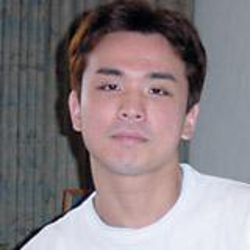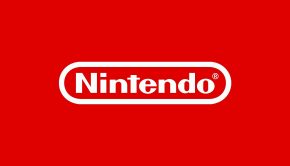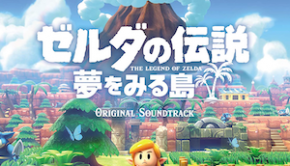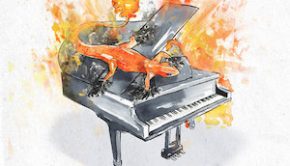Toru Minegishi Profile
 |
Also Known As: 峰岸透 (みねぎしとおる) |
| Date of Birth: 1975 (Japan) |
|
| Residence: Kyoto |
|
| Game Works: The Legend of Zelda, Wii Fit, Steel Diver |
|
| Official Site: Nintendo |
History
| Organisation | Type | Tenure | Role |
| Nintendo EAD | Game Developer | 1998 – | Composer |
| The Wind Wakers | Music Group | 2002 – | Band Leader, Drums |
Biography
Best known for his work on the Zelda series, Toru Minegishi has been a composer at Nintendo EAD since 1999. Born in 1975, Minegishi was exposed to a range of artists from an early age by his musical parents — spanning the Latin performances of Pérez Prado to the classical compositions of Modest Mussorgsky. A highlight was Pictures at an Exhibition and the artist found the connection between music and visuals particularly interesting. He made similar connections while playing video games for the Famicom Disk System. After watching a commercial for The Legend of Zelda at the age of ten, he begged his parents to purchase him a copy. The artist soon became immersed in the game, and particularly enjoyed the music and sound effects. Although he never received any musical training, Kondo started to play the drum kit at junior high school and formed a rock band at college. He also started to compose a wide range of music for fun, setting his sights on becoming a video game sound designer.
In 1998, Toru Minegishi successfully applied to become a sound designer at Nintendo Entertainment Analysis and Development. The composer that first made him passionate about video game music, Koji Kondo, had become his boss. The artist first learned the ropes of composing while working on Pokémon Stadium alongside two more experienced composers, Kenta Nagata and Hajime Wakai. This project taught him that composing music for video games was very different from composing for fun — it was necessary for him to produce music that wasn’t intrusive during the gameplay and there were also technological challenges associated with the role. He also returned for the sequel. Marking his debut on the Zelda series, he was subsequently asked by Koji Kondo to produce three battle themes for Majora’s Mask; he made a big impact with rasping brass melodies and thunderous percussion in a series where battle music is often regarded unremarkable. The artist also produced several tracks for Mario Artist: Talent Studio, including a retro-styled piece featured in the compilation ’Luigi B-Side Music’.
In a further demanding role, Minegishi was assigned to produce the indoor music for the original Animal Crossing under direction by Kazumi Totaka. Among his assignments, he was asked to create the 50 tunes performed by K.K. Slider as a treat during the game. Asked to write each piece in a different genre, he intensely studied different kinds of music to cope with this astonishing demand. The tunes were programmed to sound they were played on an old synthesizer. In addition to creating the memorable start-up sound of the GameCube, Minegishi was put in charge of the sound effects for Super Mario Sunshine. It was this project that demonstrated to the composer just how deep sound creation can be and how many challenges can be involved. Persevering to produce vibrant, dynamic sounds for the game, Minegishi was asked to return in sound effects roles for Mario Golf: Toadstool Tour and Mario Pinball Land. In each case, he helped to preserve the series’ characteristic sounds while working closely with different developers. He also had recurring roles as a voice actor on Mario Power Tennis, Mario Superstar Baseball, and Mario Super Sluggers.
Between such roles, Minegishi worked on two major Zelda titles. On The Wind Waker, Minegishi was put in charge of the cinematically-inclined title’s event pieces. In order to synchronise music with the character animations, he meticulously dissected each scene of the game and also studied how many masters in film and theatre did it — taking particular influence from Disney’s feature animations, notably Alan Menken’s score for Aladdin. Taking the lead composition role for the first time, Minegishi was closely involved with Twilight Princess throughout its development. The game planners told the artist to emphasise the dark, melancholy, and realistic feeling of the game, while also drawing in some Eastern European flavour. Under the supervision of Koji Kondo, Minegishi also ensured the score was a richly thematic one — blending extensive arrangements of the main theme to represent Link with nostalgic reprises of series’ classics. While the music was compressed to meet memory restrictions of its consoles, it nevertheless proved the largest Zelda score to date and has been celebrated in several concerts since.
As a welcome interlude to his work on the dark Twilight Princess, Minegishi co-composed the DS’ Yoshi Touch & Go alongside Asuka Ohta. Mixing series’ arrangements with jubilant new compositions, the artist once again remained faithful to the concept of the series. In 2007, the artist was appointed to lead the soundtrack for Wii Fit, and closely supervised two new composers throughout the process. While the title was completely different from his other roles, Minegishi still approached it with an open mind, aided by his long-fascination with human anatomy. Mixing live performances with synthesizer parts, he focused on soothing the mind and gently encouraging users to continue, rather than trying to make it exciting. In a welcome break from his composition roles, Minegishi is also the leader of The Wind Wakers, a brass band set up by Eiji Aonuma. This intra-company band performs several times each year for Nintendo employees, but has never performed to wider audiences. During late nights, Minegishi also sometimes relaxes and refreshes by playing drums at the band’s warehouse.
Minegishi returned to the Great Sea once more on The Legend of Zelda: Phantom Hourglass alongside Kenta Nagata. Maintaining the series’ thematically-focused approach, Minegishi blended new compositions with reprises from The Wind Waker and the series’ classics. Throughout the score, Minegishi carefully considered the technical specifications of the DS, while still maintaining a adventurous orchestral sound. Returning in the lead role on The Legend of Zelda: Spirit Tracks, Minegishi took the series in exciting new directions with the folk-flavoured main themes and a range of colourful experiments. Now reputed as one of the Nintendo EAD’s most versatile and attentive composers, Minegishi was asked to adapt music for the rhythm game Wii Music. He additionally penned a guest arrangement dedicated to Big Brain Academy for Super Smash Bros. Brawl. Minegishi’s latest project was the 3DS launch title Steel Diver alongside Atsuko Asahi, where he created music to carefully match the ambience of the undersea title. He also provided sound support during the development of Mario Kart 7.
References:
– Various Game & Album Credits
– VGMdb Discography
– Interview with Nintendo Power (English, June 2008)
– Interview with Iwata Asks (English, April 2008)
© Biography by Chris Greening (September 2007). Last updated on January 20, 2013. Do not republish without formal permission.
Posted on January 20, 2013 by Chris Greening. Last modified on March 21, 2014.














